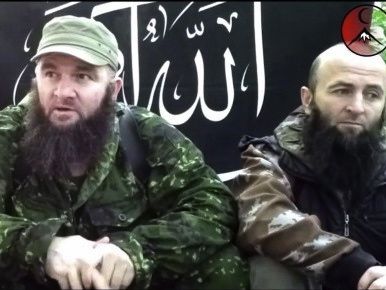- The U.S. strategy, devised by Zbigniew Brzezinski, using support for Islamist obscurantism to fight both progressive Muslim policies and against Russia, sparked an alliance to resist it. Now, China, Russia, Iran, Syria and Hezbollah are forced to stick together to survive. Ultimately observed André Charny, the trap has sprung on those who set it.
Islam against Islam …
Iran, Syria and Lebanon thanks to Hezbollah and its allies, considered by Westerners for years to be a source of evil because of their support for what they call “terrorism” have not finished being talked about. After individual treatment for each of them according to political divisions in the region, an axis has set itself up that starts at the gates of Russia and China to end at those of Tel Aviv.
This axis is rooted in Western politicies reserved for this region. The United States, followed by major Western countries, have declared how its economic interests must be preserved at all costs. This biased policy has generated tensions over the years, the source of armed conflicts and street fights that incessantly feed the televised news.
This policy, enshrined for some time, was implemented with the support of local stakeholders. However, an acceleration took place after the fall of the Berlin Wall, lived as an historical event, which it obviously was, but that marked the advent of an aggressive and contemptuous strategy toward the Middle East.
The USSR having disappeared, the countries of the region could not hope for anything other than to rely on Western control, notably that of the United States. Instead of taking advantage of this privileged position as arbitrator, the latter and some other Western countries would favor the crash and the domination of the “extended Middle East” through direct interventions in Iraq and Afghanistan, but also in Lebanon, in Yemen and the Maghreb with the declared intention of intervening in Syria and in Iran.
The United States has known, since the seventies, following the oil shock, that they must control the sources of raw materials, especially oil, as well as routes for accessing these resources, because they had the bitter experience of discovering this vital necessity both for their economy and for the comfort of their citizens.
The opinions of experts differ on the assessment of gas reserves and hydrocarbons, but an idea remains constant, that of the finite nature of these treasures that lie in greedy Bedouin hands who have no need of their gold as long as their leisure and fun are funded.
At a time when Samuel Huntington’s “clash of civilizations” has replaced the Cold War, Islam has become for the United States the new useful enemy, an “ally” of sorts, against Europe. Pragmatic and opportunistic, they have seen in the Islamic movement a “groundswell” and chose to play the Muslim card to better control the arteries of black gold. They had sensed the usefulness of this dangerous ally long before the implosion of communism.
Starting also in the 1970s, the United States supported Islamist extremists, from the Syrian Muslim Brotherhood to the Islamist Bosnians and Albanians, from the Taliban to the Egyptian Jamaa Islamyah. There was even talk of their relationship with the FIS (Islamic Salvation Front) which became the violent “GIA” in Algeria. They pampered the Wahhabis at the head of the pro-US Saudi monarchy which finances almost all Islamist networks in the world. They played the sorcerer’s apprentice and fundamentalist movements they believed they could handle sometimes turned against the “Great Satan ” to achieve their own goals.
In contrast, the U.S. has abandoned or wanted to neutralize Muslim countries likely to gain political power and relative autonomy. Consider President Jimmy Carter’s abandoning the Shah, while Iran was becoming master of its oil. To this is added the will to crush any hint of intellectual independence for even secular Arab countries such as Syria, Egypt and Iraq.
Playing with Islamism came to the detriment of secular movements representing an alternative to radical political Islam, the latter representing a safe haven after each failure in this area. However, this “Islamism” is obviously not to be confused with the “Islamic” Republic of Iran which has an unusual genesis. Moreover, several authors of distinction studying Islamist movements sometimes make the mistake of confusing the Islamic Republic of Iran with the Islamists, though they have nothing in common, except the fact they reference Islam and Sharia. The fundamental difference is the very definition of political Islam advocated by one and the other.
Everything separates them fundamentally and if indeed the Americans didn’t do much to save the Shah, this attitude was justified by them for strategic reasons, because Iran for them could in no way be permitted to become a major regional power. Which explains that some time after the fall of the Shah, the U.S. initiated the war waged by Saddam Hussein against his neighbor, which led to the ruin of the only two countries that could have a decisive influence in the Gulf region.
However, the developments in Iran after its war with Iraq allowed the former to become a real regional power, feared by certain Gulf monarchies, who preferred to entrust their security to the West, most particularly to the USA. In exchange, they entrusted their “resources” to Western economies and funded activities and movements designated by Washington’s secret services.
 Doku Umarov, the Emir of Al- Qaeda in the North Caucasus, was responsible for crippling Russia during the Olympic Games in Sochi, while NATO changed the regime in Ukraine.
Doku Umarov, the Emir of Al- Qaeda in the North Caucasus, was responsible for crippling Russia during the Olympic Games in Sochi, while NATO changed the regime in Ukraine.
These same monarchies were to turn a blind eye to current events in some regions including Palestine, even though they claimed to support the aspirations of the Palestinian people. They became the first Arab countries to have direct or secret contacts with the State of Israel, which later led to the rapprochement of Palestinian resistance movements with the Iranians.
The latter appear today as the only ones willing to defend the holy places of Islam with the men of Al-Quds, a branch of the Revolutionary Guards, and through their support for Hamas. The US magic has turned against the magician.
The Arab-Muslim world must remain for North America a world rich in oil, exploitable at will, but poor in gray matter and kept in a state of total technological dependence, a market of a billion consumers incapable of political, military and economic independence. The Qur’anic yoke is, according to this view, conducive to intellectual poverty.
The Rules of the Game
A Tehran-Beirut axis through Baghdad and Damascus materialized progressively at the expense of Washington’s strategy in the region. It was essential over the years that this axis adopt allies and partners in particular because of sanctions against Iran and Syria.
Moreover, historically, the Damascus-Moscow line has never been suspended despite the disappearance of the Soviet Union, despite the tumultuous period crossed by the Russian Federation. But the arrival of President Vladimir Putin, aspiring to restore Russia ’s role on the international scene and preserve its strategic interests, was not to the liking of the United States.
For its part, Iran would develop its relations with Russia, become its objective ally in negotiations with the West about its nuclear program. China has also strengthened its ties with Tehran, especially following the embargo on the Iranian economy.
These two great powers became by force of circumstances the strategic rear bases of the “Axis of Hope”. It is obvious that everyone is benefiting, but the Russians and the Chinese are not unhappy to have partners who queen the pawns of their historical opponents, while enjoying the Iranian oil and gas and strategic positions offered by Syria’s situation over U.S. forward positions.
In his book, The Grand Chessboard, America and the Rest of the World, published in 1997, Zbigniew Brzezinski, former national security adviser to President Carter and very influential in Clinton’s United States, revealed with cynical frankness the reasons at the root of the Islamic strategy of his country. According to him, the main challenge for the United States is Eurasia, a vast expanse ranging from Western Europe to China via Central Asia : “From the American point of view, Russia seems destined to become the problem … ”
The United States is therefore becoming more and more interested in the development of resources in the region and seeks to prevent Russia from having supremacy. “The U.S. policy also aims both the weakening of Russia and the absence of military autonomy of Europe. Hence the NATO expansion to Central and Eastern Europe, in order to sustain the U.S. presence, while the formula for a European defense capable of countering American hegemony on the old continent would involve “an anti-hegemonic Paris-Berlin-Moscow axis.
 On the night of March 1 to 2, 2014 , while Russia was preparing to intervene in Crimea, an Islamist group attacked passengers at a station in Yunnan (a region where Muslims are very rare), killing at least 29 people and seriously injuring 130. The United States thus sent a message to the Chinese government not to intervene in the conflict. To everyone’s surprise, the Chinese ambassador to the Security Council the next day limited himself to a few general phrases in the debate on the situation in Ukraine.
On the night of March 1 to 2, 2014 , while Russia was preparing to intervene in Crimea, an Islamist group attacked passengers at a station in Yunnan (a region where Muslims are very rare), killing at least 29 people and seriously injuring 130. The United States thus sent a message to the Chinese government not to intervene in the conflict. To everyone’s surprise, the Chinese ambassador to the Security Council the next day limited himself to a few general phrases in the debate on the situation in Ukraine.
In fact, through its choices, the US seems to have been mistaken on all fronts that were used as bases to conquer sources of oil and gas, attracting to itself stinging political failures. As for the Western countries, they virtually abandoned all strategy and have entrusted their foreign policy to the United States. Even if they try to save face by some posturing, they know that they are not the ones who run the show. The recent example of François Hollande and Laurent Fabius playing let’s-go-to-war is an illustration : they had to fold quickly, understanding that negotiations between Messieurs Lavrov and Kerry took precedence over their preemptive announcements.
The Response of the Tiger
Noting the failure of their maneuvers, the Americans wanted to raise tension against Russian authorities determined to oppose them, while China remained in ambush to assess the situation, moreover little inclined to trust Washington …
Recall that China is as much interested as Russia in the Middle East : the first sign of interest dates back to 1958 during the Lebanon crisis which led to the U.S. landing on Lebanese shores, to which Beijing strongly objected, long before the USSR.
These US maneuvers are particularly well-established, since the process is relatively simple. First it participates in the creation of NGOs supposed to advocate for human rights. It encourages some “whistleblowers”, and it provides a forum for obscure opponents without great scope to create at a given time a set of conditions for the destabilization of a country.
This is a job that is prepared for years. It has been tried during the Cold War, the most glaring example is that of Chile, and continued to the present day with the famous “color revolutions” and more recently the “Arab Spring.” The same actions are being prepared in other countries that we see in the headlines, especially in Azerbaijan.
 May 8 , 2007 in Ternopol (Western Ukraine), Nazis and Islamist factions create a so-called anti-imperialist front to fight against Russia. Organizations from Lithuania, Poland, Ukraine and Russia participate, including Islamist separatists from Crimea, Adygea, Dagestan, Ingushetia, Kabardino-Balkaria, Karachay-Cherkessia, Ossetia and Chechnya. Because of international sanctions, Dokka Umarov can’t be there but has his contribution read. The Front is chaired by Dmytro Yarosh, who became Deputy Secretary of the National Security Council of Ukraine in the coup in Kiev, February 2014.
May 8 , 2007 in Ternopol (Western Ukraine), Nazis and Islamist factions create a so-called anti-imperialist front to fight against Russia. Organizations from Lithuania, Poland, Ukraine and Russia participate, including Islamist separatists from Crimea, Adygea, Dagestan, Ingushetia, Kabardino-Balkaria, Karachay-Cherkessia, Ossetia and Chechnya. Because of international sanctions, Dokka Umarov can’t be there but has his contribution read. The Front is chaired by Dmytro Yarosh, who became Deputy Secretary of the National Security Council of Ukraine in the coup in Kiev, February 2014.
It is in this context that “events” broke out in June 2009 in Iran, under the pretext of challenging conditions for the election of President Mahmoud Ahmadinejad. The Islamic Republic had to face it for nearly nine months. Hezbollah was also confronted, after the Israeli attack which lasted 33 days, by a new government plot to deprive it of a tool directly related to its security, namely its communication network. Its response was quick and effective on 7 May 2008 which the plotters considered as an affront though it was tit for tat !
There remained in the “Axis of Hope” only Syria, which had been notified by the Americans that if it did not stop its relationship with Iran and Hezbollah, it would suffer the fate of other Arab countries affected by a “spring” supposed to bring the swallows of democracy but which brought only the crows of terror and instability.
It is in this context that the famous “color revolutions” impact Russia through the Ukrainian example. These revolutions have deprived Russia of most of its strategic field. Europe (UEE) was used, which was to host the Ukrainians with a promise of better economic conditions and aid. But in reality, these events have allowed the United States to establish military bases at Moscow’s doorstep. At the time, Russia, weakened by a power that had neither ambition nor scale was not able to respond.
Russia today cannot accept that this example recur throughout Ukraine. This explains its immediate reaction. Its reaction is despite appearances in accordance with the examples in the Middle East, since the idea is to say that democracy is not exercised in the street, but is won at the polls. If the opposition wanted to take power, it should have to go through elections.
Beyond this, Russia, barely out of aggression from the Chechen militias that brought death and terror in its territory with the financial support of some Gulf monarchies, of course defends its interests. This explains the veiled threat made by the Saudis saying : “We could help you avoid the threat of terrorism in Sochi, if you yield on the Syrian issue.” They were obviously turned down.
In any event , this demonstrates both the role of the Gulf monarchies and the use of Islamist movements to covertly promote U.S. policies which, through the destabilization of some states, believe they create conditions which would be more favorable to them in the region.
The Beijing Beirut axis, via Moscow, Tehran and Damascus, will only grow stronger. This is virtually a survival issue for each. According to an Eastern proverb: “Do not back a cat into a corner, at the risk of seeing it transform into a tiger.” But what can happen if we try to back a tiger into a corner? It is certain that nobody wants to know the answer.

By André Chamy (Translation Roger Lagassé)
http://www.voltairenet.org/article182604.html
